Jazz is a music genre that originated at the beginning of the 20th century, arguably earlier, within the African-American communities of the Southern United States. Its roots lie in the combining by African-Americans of certain European harmony and form elements, with their existing African-based music. Its African musical basis is evident in its use of blue notes, improvisation,polyrhythms, syncopation and the swung note.[1] From its early development until the present day, jazz has also incorporated elements from popular music especially, in its early days, from American popular music.[2]
As the music has developed and spread around the world it has, since its early American beginnings, drawn on many different national, regional and local musical cultures, giving rise to many distinctive styles: New Orleans jazz dating from the early 1910s, big band swing, Kansas City jazz and Gypsy jazz from the 1930s and 1940s, bebop from the mid-1940s on down through Afro-Cuban jazz, West Coast jazz, ska jazz, cool jazz, Indo jazz, avant-garde jazz, soul jazz, modal jazz, chamber jazz, free jazz, Latin jazz in various forms, smooth jazz, jazz fusion and jazz rock, jazz funk, loft jazz, punk jazz, acid jazz, ethno jazz, jazz rap, cyber jazz, M-Base, nu jazz and other ways of playing the music.
Louis Armstrong, one of the most famous musicians in jazz, said to Bing Crosby on the latter's radio show, "Ah, swing, well, we used to call it syncopation, then they called it ragtime, then blues, then jazz. Now, it's swing. White folks - yo'all sho is a mess!"[3][4]
In a 1988 interview, trombonist J. J. Johnson said, "Jazz is restless. It won't stay put and it never will".[5]
Definitions[edit]
Jazz spans a range of music from ragtime to the present day—a period of over 100 years—and has proved to be very difficult to define. Attempts have been made to define jazz from the perspective of other musical traditions—using the point of view of European music history or African music for example—but critic Joachim-Ernst Berendt argues that its terms of reference and its definition should be broader.[6] Berendt defines jazz as a "form of art music which originated in the United States through the confrontation of the Negro with European music"[7] and argues that it differs from European music in that jazz has a "special relationship to time defined as 'swing'", involves "a spontaneity and vitality of musical production in which improvisation plays a role" and contains a "sonority and manner of phrasing which mirror the individuality of the performing jazz musician".[6]
A broader definition that encompasses all of the radically different eras of jazz has been proposed by Travis Jackson: he states that it is music that includes qualities such as swing, improvising, group interaction, developing an 'individual voice', and being open to different musical possibilities.[8] An overview of the discussion on definitions is provided by Krin Gabbard, who argues that "jazz is a construct" that, while artificial, still is useful to designate "a number of musics with enough in common to be understood as part of a coherent tradition".[9] In contrast to the efforts of commentators and enthusiasts of certain types of jazz, who have argued for narrower definitions that exclude other types, the musicians themselves are often reluctant to define the music they play. Duke Ellington, one of jazz's most famous figures, summed up this perspective by saying, "It's all music".[10]
爵士樂(英語:jazz)是一種起源於非洲形成於美國的音樂形式。誕生於19世紀末的美國密西西比河畔港埠新奧爾良,在它之前是一些更早出現的美國黑人音樂(如藍調、福音歌曲等),而這些音樂是美國黑人根植於其非洲音樂傳統的基礎上,結合他們在現實中的遭遇創作出來的。早期藍調主要表現黑人的悲慘境遇和底層生活狀態(藍調的英文原字Blue除了指『藍色』之外亦有『憂鬱』之意),大多比較凄苦。福音歌曲主要是(向上帝)祈求平安,希望得到救贖。爵士樂在其發展過程中除了有黑人音樂的根源外,還吸收了如古典音樂、民族音樂等諸多音樂元素,逐漸形成了今天多門多類的爵士樂,所傳遞的內容也更為多樣,不只是早期的「黑人風格」。
History[edit]
Origins[edit]
Blending African and European music sensibilities[edit]
By 1808 the Atlantic slave trade had brought almost half a million Sub-Saharan Africans to the United States. The slaves largely came from West Africa and the greater Congo River basin. They brought strong musical traditions with them.[20] The rhythms had a counter-metric structure, and reflected African speech patterns. African music was largely functional, for work or ritual.[21] The African traditions made use of a single-line melody and call-and-response pattern, but without the European concept of harmony.
爵士樂的歷史[編輯]
爵士樂的根源[編輯]
爵士樂源於藍調,是一種以前居住在美國南部的非洲奴隸以及他們的後代們的民間音樂。藍調深受西非文化和音樂傳統的影響,這些奴隸也逐漸成為移居到城市的黑人的音樂家。
爵士樂的真正起源是貧窮。1865年,美國內戰結束,往日黑人奴隸獲得了自由,但是生活依然困苦。他們多數是文盲,唯有靠自己故土培植出的音樂娛樂自己。勞動的號子和農田歌曲是在採摘棉花時唱的,讚美詩歌和聖歌是在種族隔離的教堂裡聚會時唱的,而即興之作則是獨唱歌手在一支班卓琴伴奏下吟唱的。在教堂中,黑人牧師用英國領唱方式來解決唱歌不懂字的問題。
上世紀之交流行的標準音樂會形式,也就是當時軍樂團和舞會樂隊的音樂,影響了最早的爵士樂的主流表達方式。這些音樂的樂器:銅管樂器,簧管樂器和鼓,成為了爵士樂的基本樂器。
二
Importance of improvisation[edit]
While jazz is considered difficult to define, improvisation is consistently regarded as being one of its key elements. The centrality of improvisation in jazz is attributed to its presence in influential earlier forms of music: the early blues, a form of folk music which arose in part from the work songs and field hollers of the African-American workers on plantations. These were commonly structured around a repetitive call-and-response pattern, but early blues was also highly improvisational. Although Europeanclassical music has been said to be a composer's medium in which the performer is sometimes granted discretion over interpretation, ornamentation and accompaniment, the performer's primary goal is to play a composition as it was written. In contrast, jazz is often characterized as the product of group creativity, interaction, and collaboration, that places varying degrees of value on the contributions of composer (if there is one) and performers.[11] In jazz, therefore, the skilled performer will interpret a tune in very individual ways, never playing the same composition exactly the same way twice. Depending upon the performer's mood and personal experience, interactions with other musicians, or even members of the audience, a jazz musician may alter melodies, harmonies or time signature at will.
The approach to improvisation has developed enormously over the history of the music. In early New Orleans and Dixieland jazz, performers took turns playing the melody, while others improvised countermelodies. By the swing era, big bands were coming to rely more on arranged music: arrangements were either written or learned by ear and memorized, while individual soloists would improvise within these arrangements. Later, in bebop the focus shifted back towards small groups and minimal arrangements; the melody would be stated briefly at the start and end of a piece, but the core of the performance would be the series of improvisations. Later styles such as modal jazz abandoned the strict notion of achord progression, allowing the individual musicians to improvise even more freely within the context of a given scale or mode. In many forms of jazz a soloist is often supported by a rhythm section that accompanies by playing chords and rhythms that outline the song structure and complement the soloist.[12] In avant-garde and free jazz idioms, the separation of soloist and band is reduced, and there is license, or even a requirement, for the abandoning of chords, scales, and rhythmic meters.
Slave gatherings[edit]
Lavish festivals featuring African-based dances to drums were organized on Sundays at Place Congo, or Congo Square, in New Orleansuntil 1843.[22] There are historical accounts of other music and dance gatherings elsewhere in the southern United States. Robert Palmer commented on percussive slave music:
Usually such music was associated with annual festivals, when the year's crop was harvested and several days were set aside for celebration. As late as 1861, a traveler in North Carolina saw dancers dressed in costumes that included horned headdresses and cow tails and heard music provided by a sheepskin-covered "gumbo box", apparently a frame drum; triangles and jawbones furnished the auxiliary percussion. There are quite a few [accounts] from the southeastern states and Louisiana dating from the period 1820–1850. Some of the earliest [Mississippi] Delta settlers came from the vicinity of New Orleans, where drumming was never actively discouraged for very long and homemade drums were used to accompany public dancing until the outbreak of the Civil War.[23]
十世紀早期[編輯]
在二十世紀早期時,爵士樂在紐奧良慢慢地孕育出來,而早期的爵士樂大多數牽涉到性愛。更確切來說,早期的爵士樂本來就是一種低下階層的音樂,而當時在妓院中都有一些樂手在演奏,娛樂之餘也做生意,所以性愛與爵士樂從最初就秤不離砣。紐奧良獨自創造著爵士樂──類似的音樂在南部的廣闊鄉村與諸如巴爾的摩、聖路易斯這樣的城市裡處處可見。 爵士樂這名字,其實也是性愛,比格·O·朗 將在性愛中短暫的高潮稱為「Jass」。於是首批樂隊中的原創迪西蘭德「Jass」樂隊就把自己的名字拼案成了這模樣。一些調皮鬼把海報上寫的Jass把J塗掉了,Jass就變了ass(屁股),樂隊將名字的拼寫改為「Jazz」。此外,我們還可以說是「James」這個名字的縮寫;法語方言中,有一個動詞「爵瑟」,是聊天的意思;各種各樣的非洲詞彙。任君選擇。Jazz就這樣在紐奧良中發展起來。[來源請求]
初期的爵士樂樂器,有來自軍樂銅管樂隊的短號、活瓣長號和鼓,有家住城裡的那些受教育、家境殷實的混血克奧爾人帶來的單簧管和貝斯(bass),還有流浪的吟遊歌人和藍調歌手們手中的的吉他。但凡缺乏精緻的地方,樂隊一律用音量和激情予以補償。所有爵士樂手都在酒吧與妓院裡、在斯多利城裡開創自己的事業,演奏者適宜新月城這樣的大都會的狂暴喧騷的音樂。許多人所共知的作品都由這一地區的地名而得名──其中最為知名的有巴辛街藍調和堪納爾街藍調,此外還有許多諸如此類的音樂家。在1917年以前,一些公認的爵士樂就已然成型了。而早期的爵士樂並沒有錄音紀錄。
1917年美國加入了世界大戰,與此同時爵士樂最終錄製了第一張唱片。不過這唱片並非在紐奧良錄製,而是在紐約;而樂隊的五位成員都是些小夥兒,但他們都是白人,把面塗黑了便充當黑人。而許多唱片公司當時打算為這種新興的音樂錄製唱片。但這些公司都遠在北部城市裡,而樂手卻多集中於南部。炙手可熱的一位──短號手弗萊迪·凱帕德(Freddie Keppard)在芝加哥和紐約的原創克萊奧爾樂隊工作──偏偏又唯恐有人剽竊他的技巧,拒絕了錄音,白白錯過了成為進入史冊第一人的機會。
在戰後,爵士樂由紐奧良的基地遷別處。而有兩個說法,一是因為紐奧良當時是美國的軍事基地,而士兵每天喝得爛醉如泥,政府便把所有酒吧,妓院禁止營業。而另一說法則為當時南方落後,而北方城市較宏大,而且財勢雄厚,北方俱樂部也比南方好,故爵士樂手也隨之搬家了。早期的爵士樂曲,已知是集體演奏的,由短號帶領,單簧管穿插其間,長號標誌重音,再由吉他、貝斯和鼓控制節奏。
搖擺大樂團(Big band swing)[編輯]
搖擺樂時期,三十年代爵士樂又邁入另外一個新局面,那就是搖擺樂的誕生,而大樂團(Big Band)的興盛又對搖擺樂產生了舉足輕重的影響。搖擺樂和以往最為不同的地方在於節奏的改變,它將原來紐奧爾良爵士樂中的二拍子節奏變為更為平滑流暢的四拍節奏,同時樂手們也發展出使用簡短的旋律模式,稱之為Riff(參閱詞彙解釋篇),而為了促長這種演奏方式,樂團因而被分成各種不同的樂器組,每一組都有自己的Riff,同時更提供了樂手演奏較長獨奏的機會。 在大樂團發展中有兩位非常重要的人物,那就是綽號「艾靈頓公爵」的Edward Kennedy Ellington與Fletcher Henderson。二十年代時,艾靈頓公爵和他的樂團在紐約的綿花田俱樂部表演,並持續領導他的樂團直到他去世為止。他一生創作與演奏出很多膾炙人口的曲子。他們兩位都是大樂團音樂的代表性人物,而遵循艾靈頓公爵與Henderson風格的樂團領導人則包括了Jimmie Lunceford、Chick Webb與Cab Calloway等人。於此同時,在堪薩斯市的Count Basie也發展出不同風格的大樂團爵士樂。不論他們之間的樂風如何不同,但基本上他們的音樂都有一共同特性,那就是樂曲雖然大都經過精心的編排,但卻給與樂手或多或少的空間去發揮即興獨奏,也因此在這些樂團中往往培育出很多非常優秀甚至樂風前進的樂手,如Henderson樂團中的薩克斯風手Coleman Hawkins與Basie樂團中的薩克斯風手Lester Young等。 在最後我們必須提到搖擺樂另一個重要人物Benny Goodman,他本身不但是位技巧精湛的單簧管手,他所領導的大樂團或是以三人到六人為編制小樂團,不論在藝術或商業上都獲得極大的成功,也對後來的爵士樂音樂產生相當大的影響。
Debates[edit]
Forms of jazz that are commercially oriented or influenced by popular music have been criticized since at least the emergence of bebop. According to Bruce Johnson, there has always been a "tension between jazz as a commercial music and an art form".[8] Traditional jazz enthusiasts have dismissed bebop, free jazz, the 1970s jazz fusion era, and much else as periods of debasement of the music and betrayals of the tradition; the alternative viewpoint is that jazz is able to absorb and transform influences from diverse musical styles,[13] and that, by avoiding the creation of 'norms', other newer, avant-garde forms of jazz will be free to emerge.[8]
Another debate that gained a lot of attention at the birth of jazz was how it would affect the appearance of African-Americans, in particular, who were a part of it. To some African-Americans, jazz has highlighted their contribution to American society and helped bring attention to black history and culture, but for others, the music and term 'jazz' are reminders of "an oppressive and racist society and restrictions on their artistic visions".[14]
咆勃樂(Bebop)[編輯]
隨著第二次世界大戰的爆發,大樂團搖擺樂也跟著沒落,而使得爵士樂又有了一次重大的變革,那就是咆勃(Bop)爵士樂的誕生。咆勃爵士樂起源於紐約,一群音樂家認為:一、大樂團的搖擺樂因為編寫好的部份較多,而留給獨奏者即興發揮的空間較少;二、早期爵士音樂和聲上較缺乏刺激性;三、即興內容上,早期的音樂家們多以調性內的琶音手法演奏,旋律以較多四分音符而非大量的八分音符為主,節奏亦未有較刺激的感受;再加上Coleman Hawkins、Charlie Christian、Lester Young、Jo Jones等前輩們一些創新的聲音與觀念吸引他們,他們開始在明頓俱樂部(Minton's Playhouse)演奏這種稱之為咆勃的新音樂。由於咆勃音樂多以三到六人編制的小樂團演奏,各樂器的音量變大,音色也較激昂。旋律上,樂手們使用大量的八分音符為主軸,並採用了許多半音趨近的手法增加線條的複雜度,許多的裝飾音也是複雜旋律的手法之一;和聲上,二五和聲行進被大量地使用在樂曲中,使即興者無法再僅以同一個調的音階應付,而必須要繞著複雜的和弦行進走,大小調調式互換的方式亦反應在所演奏的旋律上;節奏上,常出現以三為一組的音形,造成節奏錯置的感覺,或是刻意將重音或高音放在反拍造成搶拍的效果;作曲上,此時期的音樂家仍深植於藍調、流行歌曲的曲式,但利用了上述和聲的手法改進,或是重新譜寫新的複雜旋律於原本的和聲行進上(如Tadd Dameron的Hot house之於What is this thing called love);合奏上,鼓手及鋼琴手須要更多對即興者的呼應,甚或給予節奏上或和聲上的動機以刺激即興者,構成了須要高度互動聆聽的現代爵士樂基礎。咆勃音樂的首要推動者就是薩克斯風手查利·帕克(Charlie Parker)、小喇叭手迪齊·吉萊斯皮(Dizzy Gillespie)、Miles Davis、鋼琴手Bud Powell、Thelonious Monk、鼓手Kenny Clarke、麥斯·羅區(Max Roach)、貝斯手Charles Mingus等人。其中,最著名的咆勃爵士樂錄音即是馬賽廳現場專輯(Jazz at Massey Hall),由查利·帕克、迪齊·吉萊斯皮、Bud Powell、Charles Mingus、麥斯·羅區五位咆勃樂時期最優秀的音樂家所錄製。此時期的原創經典名曲有Blues for Alice、Ornithology、Anthropology、Straight, no chaser、Bebop、Salt peanuts等等。
Etymology[edit]
The origin of the word jazz has had wide spread interest—the American Dialect Society named it the Word of the Twentieth Century—which has resulted in considerable research, and its history is well documented. The word began [under various spellings] as West Coast slang around 1912, the meaning of which varied but did not refer to music. The use of the word in a musical context was documented as early as 1915 in the Chicago Daily Tribune.[15] Its first documented use in a musical context in New Orleans appears in a November 14, 1916 Times-Picayune article about "jas bands."[16]
酷派爵士(Cool)[編輯]
在咆勃爵士樂興盛的時候,一種衍生自咆勃爵士樂的樂風產生了,這就是酷派爵士樂(Cool Jazz)。這種音樂起始於四十年代末與五十年代早期,它結合了咆勃爵士樂的技術層面與其本身獨特的音色:很少的泛音及顫音,並將之柔順化以避免和原來風格一樣有稜有角。這方面的代表人物無疑是小喇叭手Miles Davis。這種酷派爵士樂影響了很多的樂團與樂手,尤其是西海岸的樂手,因此它又稱之為西海岸爵士樂(West Coast Jazz),樂手如次中音薩克斯風手Zoom Sims及Stan Getz、低音薩克斯風手Gerry Mulligan都是這種樂風的主導人物,而這種以酷派爵士樂為基礎的音樂持續興盛到五十年代。同時,在五十年代,鋼琴手Dave Brubeck與中音薩克斯風手Paul Desmond也以融合了古典與酷派爵士樂風的音樂而大受歡迎。
Race[edit]
Imamu Amiri Baraka argues that there is a distinct "white jazz" music genre expressive of whiteness.[17] The first white jazz musicians appeared in the early 1920s in theMidwestern United States.[18] Bix Beiderbecke was one of the most prominent white jazz musicians.[19]
硬式咆勃(Hardbop)[編輯]
硬包勃爵士樂 當西岸興起酷派爵士樂的時候,東海岸卻繼續延伸並擴張包勃爵士樂,且形成較包勃爵士樂更熱烈與強勁的硬包勃爵士樂(Hard Bop),硬包勃爵士樂除了更強調獨奏外,節奏樂手與管樂搭檔也相互親密搭配負責獨奏,鼓手更突然成為主要的推動者。在這次的風潮中,鼓手Art Blakey成為主要的角色,其他像薩克斯風手Sonny Rollins、Jackie McLean、Johnny Griffin、小喇叭手Clifford Brown、Lee Morgan等,均以他們傑出的才華賦予這種音樂真正的方向與型態。
後咆勃(Postbop)[編輯]
|
|
本條目需要精通或熟悉本主題的編者參與及協助編輯。 (2010年10月19日) |
Hardbop以來的曲式中和弦排列的愈趨密集複雜,對樂手的限制也愈多,因為樂手須要小心的繞著和弦,旋律線條也因此受到了較多的規範。Miles Davis在拜讀了George Ruessell的大作之後,嘗試在Milestones專輯創作了同名曲Milestones,是一首以調式為基礎寫成的曲子。而大家所熟知的當然還是最著名的Kind of blue中的So What,整首曲子只有兩個和弦 - Dm7與Ebm7。在此Dm7就佔了整首曲子的75%,於是,曲子不再有回到一個主要調性的趨勢,而是呈現一片廣闊的聲音,和聲不再密集的結果,是讓即興者有更大的彈性來專注在旋律上。當然,所謂的調式音階也因此而大量的派上用場,但是如果只是上上下下的「爬音階」來進行旋律的創造,一定會顯得無聊。此時,用節奏的動機發展,甚至是重複的樂句來製造即興內容更顯重要。這類最基本的調式曲子,因為其廣闊的聲音,也被鋼琴手Herbie Hancock拿來創作了Maiden Voyage,聆聽這首曲子,不正就像一艘正要航向廣闊大海的感覺嗎?而這種形式的modal jazz,也促成了另一位鋼琴大師McCoy Tyner的蹶起。Bill Evans於Kind of blue專輯即出現過的四度和聲,在McCoy Tyner手中發揚光大,左手與bass手同步重壓低音後立刻回來彈奏三音的四度和聲,右手在飛快的以大量的五聲音階進行即興,正是Tyner的拿手好戲。而四度和聲一路的堆疊上去雖然有時較無法表現功能和聲完整的聲響,但modal jazz卻正好適用。McCoy Tyner的The Real McCoy專輯開頭曲Passion Dance正是最佳的範例。
之後,調性與調式的樂曲也漸漸混合在一起,出現了兩種形式的合體。如Herbie Hancock的One Finger Snap、Wayne Shorter的Yes and No都是這樣的曲子,部份的橋段為modal式的和弦鋪陳,另一部份則為傳統樂曲中的II-V和弦串接。樂手們在這樣的格式也有了更多的彈性來表現自己的樂思。
而在這樣的年代裡,出現了兩位影響舉足輕重的Sax大師,一位是John Coltrane,另一位則是Wayne Shorter。這兩位大師向來即是好友,經常在一起練習,互相分享音樂的看法。一位在50年代與Miles Davis成就了第一個偉大的五重奏,另一位則在Art Blakey's Jazz Messenger中受到重用。但是兩人都在自己的樂團中漸漸無法滿足而想尋求更新的聲音,Coltrane在極繁雜的Giant Steps後反樸歸真選擇了以和弦少,以廣闊的聲音為主的modal jazz為發展,前述擁有重度火力的McCoy Tyner當然是輔佐君王的首選,而十分搖擺,卻有大開大闔的氣勢,擅長在小鼓上製造許多polyrhythm的鼓手Elvin Jones也是另一名Coltrane的選擇。bass聲響渾厚扎實的Jimmy Garrison則是最後一名補齊的人選。My FavoriteThings、Live at the Village Vanguard、Live at Birdland、Crescent、A Love Supreme、Ascension都是這個組合的完美錄音。持續的低音Pedal加上Tyner的四度和聲火力、Elvin Jones震天價響的ride與一層又一層的節奏堆疊,都給了Coltrane在這時期狂野又長篇的即興段落最好的支撐,雖然中間尚有Coltrane & Johnny Hartman、Ballads等專輯略為舒緩Coltrane的發展,但Coltrane還是往更大音量、更長段的即興前進,甚至引用Free jazz的概念,打破曲式的限制,並進入有些宗教冥想式的即興。直到後來Coltrane甚至引起兩個鼓手同時支撐他的即興,終究,Elvin Jones與Tyner都不再能忍受這麼大的音量而各自離團。這個組合也就此解散。但是現代的Sax手完全沒辦法忽略這個樂團所帶來的衝擊,向來喜歡留給後代爵士樂手許多機車難題、故意找碴的Coltrane的影響極為廣泛,Branford Marsalis的四重奏就是一個受到極大影響的樂團,而超技的Michael Brecker更是吸收了Coltrane的句法與Elvin Jones的節奏力道,展現了難以企及的爆發力,並且在專輯Infinity及Tales from the Hudson中與Tyner及Jones都有合作,有世代交替的意味在。Coltrane在modal jazz的句法影響,除了sax手,更可在如organ手Larry Young、吉他手John McLaughlin及小號手Woody Shaw等人身上看到。McCoy Tyner的聲響在Branford與Brecker合作過的鋼琴手Kenny Kirkland及Joey Caderazzo上可以聽到許多。
Wayne Shorter則是走了不一樣的路,他並不朝無曲式的方向前進,而是在體制內力求變化,嘗試了更不一樣的作曲方式。從他初出道的個人專輯NightDreamer、Speak No Evil、Juju開始,即可聽到他的野心。有稍借用ColtraneGiant Steps和弦概念的Night Dreamer、全音階譜寫成的Juju、和聲節奏寬廣的Mahjong等都是他的名作。不難看出Shorter的一些作曲特徵:(1)五聲音階的使用,如:Mahjong、Yes and No(2)重複的旋律但卻暗藏不同的和聲,如:Wild flower、Black nile(3)非傳統32或16小節的格式,如:Virgo、Speak no evil。而作曲上的創新,也促使正想追求新轉變的Miles Davis力邀Shorter的入團。Miles曾說過"If I was the inspiration and wisdom and the link for this band, Tony (Williams) was the fire, the creative spark; Wayne was the idea person, the conceptualizer of a whole lot of musical ideas we did; Ron (Carter) and Herbie (Hancock) were the anchors",由此可見他對Shorter的器重。Shorter也在這時期利用更進階的modal概念,將相同或不同調式中的和弦排列於一首曲子,使曲子和弦排列複雜卻又不像bebop時期可以用II-V直接貫穿過去,大大增加了即興上的難度。而這樣的曲子所營造出的氣氛,須要大量的節奏組互動才有辦法支持。同樣的概念拿回去演奏傳統的爵士樂一樣有效果,聽聽Miles在錄製經典五重奏原創專輯前的幾張現場錄音:Miles in Berlin、My Funny Valentine、Miles in Tokyo、雖然Sax手略有更替,並不全是Shorter,但可以聽見鋼琴,bass及鼓在替曲子鋪陳的過程,忽而快速激昂,突然間又沉靜下來,對於一首樂曲不再像傳統bebop與hardbop player般的處理方式,而是即使在同一人的即興中也可能會讓氣氛堆疊又落下,再堆疊再落下的高潮起伏。而他們這樣的玩法,拿回來演奏自己的創作,更可以讓曲子有完全不同的感受。建議可以聆聽比較Wayne Shorter在自己的專輯Adam's Apple中與Miles Davis五重奏專輯MilesSmile中的同一首Shorter的創作Footprints,Herbie Hancock在Speak like aChild專輯中與Miles五重奏專輯The Sorcerer中的同名曲The Sorcerer,及Eddie Harris在Swiss Moment中與Miles五重奏專輯中的Freedom Jazz Dance,就可以明白為什麼這個五重奏會被稱為是史上最棒的爵士天團之一。以樂曲角度而言,Wayne Shorter所創作的這些曲子都有一種獨特的氛圍,當然也是延續了調式樂曲的特色,而非傳統樂曲所能做到,也因此須要相當強力的節奏組。即興上來說,不再像較傳統的樂曲可以拿來Jam,樂手熟悉的II-V行進不再常見,連結的和弦不再那麼可以預期,得靠即興者花時間練習思考該如何將和弦串接的更好。互動來說,聆聽變得更加重要,idea不只是即興者丟給節奏組,節奏組也須隨時製造動機,即興者隨之回應。Miles Davis的E.S.P、Miles Smiles、Nefertiti、The Sorcerer也成為60年代的指標性專輯,是不論樂手及樂迷都不應錯過的經典。
自由爵士(Free Jazz)[編輯]
自由爵士是一種形式非常自由的爵士風格。與其他風格的爵士樂不同,演奏自由爵士樂時樂手們不會按照先排練好的樂譜演奏, 整個演奏中演奏者們都是憑著聽覺和對爵士樂的感覺自己即興發揮,創造樂曲。演奏者們由鋼琴手開始,即興彈奏幾個和弦,隨後Bass手跟進,幾小節後薩克斯風也跟著已演奏的樂曲的感覺自由的演奏,以此類推。
自由爵士主要樂手有50年代的Ornette Coleman、Cecil Taylo 和60年代的薩克斯手約翰·柯川。
融合爵士(Fusion)[編輯]
六十年代末期,爵士樂經歷了一次危機,年輕的聽眾喜愛靈魂樂與搖滾樂,老一輩的樂迷則不再迷戀於那些大多數抽象且感情不足的現代爵士樂,爵士樂手意識到如果想挽回聽眾的心,他們勢必要在爵士樂中吸取一些流行音樂的要素,而靈魂樂與搖滾樂就成為他們這種概念最佳來源。首先邁爾士·戴維斯在爵士樂中使用了搖滾樂的電子樂器,獲得熱烈的迴響。其中1969年的專輯「Bitches Brew」為最成熟的作品。其結合了靈魂樂的節奏、電子樂器與毫不妥協的不和諧爵士樂而成。從此,融合(Fusion)爵士樂這個名詞就漸漸為人所接受。毫無疑問地,那些曾參加過邁爾士·戴維斯樂團的樂手們後來在1970年代都曾灌錄過很多成功的唱片,這些樂手包括Herbie Hancock、Wayne Shorter、Zoe Zawinul(他們共同組織了Weather Report樂團)、吉他手John McLaughlin、鋼琴手Chick Corea和他的Return To Forever等。他們領導自己的樂團演奏各具特色的融合爵士樂,在七十年代主宰了整個爵士樂的風潮。
The Black church[edit]
Another influence came from black slaves who had learned the harmonic style of hymns of the church, and incorporated it into their own music as spirituals.[24] The origins of the blues are undocumented, though they can be seen as the secular counterpart of the spirituals. However, as Gerhard Kubik points out, whereas the spirituals are homophonic, rural blues and early jazz "was largely based on concepts of heterophony."[25]
Minstrel and salon music[edit]
In the early 19th century an increasing number of black musicians learned to play European instruments, particularly the violin, which they used to parody European dance music in their own cakewalk dances. In turn, European-American minstrel show performers inblackface popularized such music internationally, combining syncopation with European harmonic accompaniment. In the mid-1800s the white New Orleans composer Louis Moreau Gottschalk adapted slave rhythms and melodies from Cuba and other Caribbean islands, into piano salon music. New Orleans was the main nexus between the Afro-Caribbean and African American cultures.
African rhythmic retention[edit]
In the opinion of jazz historian Ernest Borneman, what preceded New Orleans jazz before 1890 was "Afro-Latin music" similar to what was played in the Caribbean at the time.[26] A fundamental rhythmic figure heard in Gottschalk's compositions such as "Souvenirs From Havana" (1859), many different slave musics of the Caribbean, as well as Afro-Caribbean folk dances performed in New Orleans Congo Square, is the three-stroke pattern known in Cuban music as tresillo. Tresillo is the most basic and most prevalent duple-pulse rhythmiccell in sub-Saharan African music traditions, and the music of the African Diaspora.[27][28]
The "Black Codes" outlawed drumming by slaves. Therefore, unlike in Cuba, Haiti, and elsewhere in the Caribbean, African drumming traditions were not preserved in North America. African-based rhythmic patterns were retained in the United States in large part through "body rhythms" such as stomping, clapping, and patting juba.[31]
In the post-Civil War period (after 1865), African Americans were able to obtain surplus military bass drums, snare drums and fifes. As a result, an original African American drum and fife music arose, featuring tresillo and related syncopated rhythmic figures.[32] With this emerged a drumming tradition that was distinct from its Caribbean counterparts, expressing a uniquely African American sensibility. Palmer observes: "The snare and bass drummers played syncopated cross-rhythms," and speculates—"this tradition must have dated back to the latter half of the nineteenth century, and it could have not have developed in the first place if there hadn't been a reservoir of polyrhythmic sophistication in the culture it nurtured."[33]
Tresillo is heard prominently in New Orleans second line music, and in other forms of popular music from that city from the turn of the twentieth century to present.[34] Jazz historian Gunther Schuller commented on its retention in jazz: "by and large the simpler African rhythmic patterns survived in jazz ... because they could be adapted more readily to European rhythmic conceptions. Some survived, others were discarded as the Europeanization progressed."[35]
"Spanish tinge"—the Afro-Cuban rhythmic influence[edit]
African American music began incorporating Afro-Cuban rhythmic motifs in the nineteenth century, when the habanera (Cuban contradanza) gained international popularity.[36]Habaneras were widely available as sheet music. The habanera was the first written music to be rhythmically based on an African motif (1803).[37] From the perspective of African American music, the habanera rhythm (also known as congo,[38] tango-congo,[39] or tango.[40]) can be thought of as a combination of tresillo and the backbeat.[41]
Musicians from Havana and New Orleans would take the twice-daily ferry between both cities to perform and not surprisingly, the habanera quickly took root in the musically fertile Crescent City. The habanera was the first of many Cuban music genres which enjoyed periods of popularity in the United States, and reinforced and inspired the use of tresillo-based rhythms in African American music.
John Storm Roberts states that the musical genre habanera "reached the U.S. twenty years before the first rag was published."[42] The piano piece "Ojos Criollos (Danse Cubaine)" (1860) by New Orleans native Louis Moreau Gottschalk, was influenced by the composer's studies in Cuba. The habanera rhythm is clearly heard in the left hand.[43] With Gottschalk's symphonic work "A Night in the Tropics" (1859), we hear the tresillo variant cinquillo extensively.[44] The figure was later used by Scott Joplin and other ragtime composers.
For the more than quarter-century in which the cakewalk, ragtime, and proto-jazz were forming and developing, the habanera was a consistent part of African American popular music.[45] Comparing the music of New Orleans with the music of Cuba, Wynton Marsalis observes that tresillo is the New Orleans "clave", a Spanish word meaning 'code,' or 'key'—as in the key to a puzzle, or mystery.[46] Although technically the pattern is only half a clave, Marsalis makes the point that the single-celled figure is the guide-pattern of New Orleans music. Jelly Roll Morton called the rhythmic figure the Spanish tinge, and considered it an essential ingredient of jazz.[47]
1890s–1910s[edit]
Ragtime[edit]
The abolition of slavery led to new opportunities for the education of freed African Americans. Although strict segregation limited employment opportunities for most blacks, many were able to find work in entertainment. Black musicians were able to provide entertainment in dances,minstrel shows, and in vaudeville, by which many marching bands formed. Black pianists played in bars, clubs, and brothels, as ragtimedeveloped.[48][49]
Ragtime appeared as sheet music, popularized by African American musicians such as the entertainer Ernest Hogan, whose hit songs appeared in 1895; two years later Vess Ossman recorded a medley of these songs as a banjo solo, "Rag Time Medley".[50][51] Also in 1897, the white composer William H. Krell published his "Mississippi Rag" as the first written piano instrumental ragtime piece, and Tom Turpin published his "Harlem Rag", the first rag published by an African-American.
The classically trained pianist Scott Joplin produced his "Original Rags" in the following year, then in 1899 had an international hit with "Maple Leaf Rag". The latter is a multi-strain ragtime march with four parts that feature recurring themes and a bass line with copious seventh chords. Its structure was the basis for many other rags, and the syncopations in the right hand, especially in the transition between the first and second strain, were novel at the time.[52]
African-based rhythmic patterns such as tresillo and its variants—the habanera rhythm and cinquillo—are heard in the ragtime compositions of Joplin, Turpin, and others. Joplin's "Solace" (1909) is generally considered to be within the habanera genre,[38][54] and both of the pianist's hands play in a syncopated fashion, completely abandoning any sense of a march rhythm. Ned Sublette postulates that the tresillo/habanera rhythm "found its way into ragtime and the cakewalk,"[55] while Roberts suggests that "the habanera influence may have been part of what freed black music from ragtime's European bass."[56]
Blues[edit]
African genesis[edit]
Blues is the name given to both a musical form and a music genre[57] that originated in African-American communities of primarily the "Deep South" of the United States at the end of the 19th century from spirituals, work songs, field hollers, shouts and chants, and rhymed simple narrative ballads.[58] The African use of pentatonic scales contributed to the development of blue notes in blues and jazz.[59] As Kubik explains:
Many of the rural blues of the Deep South are stylistically an extension and merger of basically two broad accompanied song-style traditions in the west central Sudanic belt:
- A strongly Arabic/Islamic song style, as found for example among the Hausa. It is characterized by melisma, wavy intonation, pitch instabilities within a pentatonic framework, and a declamatory voice.
- An ancient west central Sudanic stratum of pentatonic song composition, often associated with simple work rhythms in a regular meter, but with notable off-beat accents (1999: 94).[60]
W.C. Handy: early published blues[edit]
W.C. Handy became intrigued with the folk blues of the Deep South while traveling through the Mississippi Delta. In this form, the singer improvised freely, and the melodic range was limited, sounding like a field holler. The guitar accompaniment was not strummed, but was instead slapped, like a small drum that responded in syncopated accents. The guitar was another "voice".[61] Handy and his band members were formally trained African American musicians who did not grow up with the blues, yet he was able to adopt the blues to a larger band instrument format, and arrange them in a popular music form. Handy wrote about his adopting of the blues:
The primitive southern Negro, as he sang, was sure to bear down on the third and seventh tone of the scale, slurring between major and minor. Whether in the cotton field of the Delta or on the Levee up St. Louis way, it was always the same. Till then, however, I had never heard this slur used by a more sophisticated Negro, or by any white man. I tried to convey this effect ... by introducing flat thirds and sevenths (now called blue notes) into my song, although its prevailing key was major ..., and I carried this device into my melody as well.[62]
The 1912 publication of his "Memphis Blues" sheet music introduced the 12-bar blues to the world (although Gunther Schuller argues that it is not really a blues, but "more like a cakewalk"[63]). This composition, as well as his later "St. Louis Blues" and others, included the habanera rhythm,[64] and became jazz standards. Handy's music career began in the pre-jazz era, and contributed to the codification of jazz, through the publication of some of the first jazz sheet music.
Within the context of Western harmony[edit]
The blues form, ubiquitous in jazz, is characterized by specific chord progressions, of which the twelve-bar blues progression is the most common. The blue notes that, for expressive purposes, are sung or played flattened or gradually bent (minor 3rd to major 3rd) in relation to the pitch of the major scale, are also an important part of the sound. The blues were the key that opened up an entirely new approach to Western harmony, ultimately leading to a high level of harmonic complexity in jazz.
New Orleans[edit]
The music of New Orleans had a profound effect on the creation of early jazz. Many early jazz performers played in venues throughout the city; the brothels and bars of the red-light district around Basin Street, called "Storyville"[65] was only one of numerous neighborhoods relevant to the early days of New Orleans jazz. In addition to dance bands, numerous marching bands played at lavish funerals arranged by the African American and European American community. The instruments used in marching bands and dance bands became the basic instruments of jazz: brass and reeds tuned in the European 12-tone scale and drums. Small bands mixing self-taught and well educated African American musicians, many of whom came from the funeral-procession tradition of New Orleans, played a seminal role in the development and dissemination of early jazz, traveling throughout Black communities in the Deep South and, from around 1914 on, Afro-Creole and African American musicians playing in vaudeville shows took jazz to western and northern US cities.[66]
Syncopation[edit]
The cornetist Buddy Bolden led a band often mentioned as one of the prime movers of the style later to be called "jazz". He played in New Orleans around 1895–1906, but became mentally ill and there are no recordings of him playing. Bolden's band is credited with creating the big four, the first syncopated bass drum pattern to deviate from the standard on-the-beat march.[67] As the example below shows, the second half of the big four pattern is the habanera rhythm.
Afro-Creole pianist Jelly Roll Morton began his career in Storyville. From 1904, he toured with vaudeville shows around southern cities, also playing in Chicago and New York. His "Jelly Roll Blues", which he composed around 1905, was published in 1915 as the first jazz arrangement in print, introducing more musicians to the New Orleans style.[69]
Morton considered the tresillo/habanera (which he called the Spanish tinge) to be an essential ingredient of jazz.[70] In his own words: "Now in one of my earliest tunes, "New Orleans Blues," you can notice the Spanish tinge. In fact, if you can't manage to put tinges of Spanish in your tunes, you will never be able to get the right seasoning, I call it, for jazz."[47]
Some early jazz musicians referred to their music as ragtime. Morton was a crucial innovator in the evolution from ragtime to jazz piano. He could perform pieces in either style.[71]Morton's solos were still close to ragtime, and were not merely improvisations over chord changes, as with later jazz. His use of the blues was of equal importance however.
Swing[edit]
Morton loosened ragtime's rhythmic feeling, decreasing its embellishments, and employing a swing feeling.[72] Swing is the most important, and enduring African-based rhythmic technique used in jazz. An oft quoted definition of swing by Louis Armstrong is: "if you don't feel it, you'll never know it."[73] The New Harvard Dictionary of Music states that swing is: "An intangible rhythmic momentum in jazz ... Swing defies analysis; claims to its presence may inspire arguments." However, the dictionary does provide the useful description of triple subdivisions of the beat contrasted with duple subdivisions.[74] Swing superimposes six subdivisions of the beat over a basic pulse structure or four subdivisions. This aspect of swing is far more prevalent in African American music than in Afro-Caribbean music. One aspect of swing, which is heard in more rhythmically complex Diaspora musics, places strokes in-between the triple and duple-pulse “grids.”[75]
New Orleans brass bands are a lasting influence contributing horn players to the world of professional jazz with the distinct sound of the city while helping black children escape poverty.[76] The leader of the Camelia Brass Band, D'Jalma Ganier, taught Louis Armstrong to play trumpet. Armstrong popularized the New Orleans style of trumpet playing, and then expanded it. Like Jelly Roll Morton, Armstrong is also credited with the abandonment of ragtime's stiffness, in favor of swung notes. Armstrong, perhaps more than any other musician, codified the rhythmic technique of swing in jazz, and broadened the jazz solo vocabulary.[77]
The Original Dixieland Jass Band made the music's first recordings early in 1917, and their "Livery Stable Blues" became the earliest released jazz record.[78][79][80][81][82][83][84]That year numerous other bands made recordings featuring "jazz" in the title or band name, mostly ragtime or novelty records rather than jazz. In February 1918 James Reese Europe's "Hellfighters" infantry band took ragtime to Europe during World War I,[85] then on return recorded Dixieland standards including "Darktown Strutters' Ball".[86]
Other regions[edit]
In the northeastern United States, a "hot" style of playing ragtime had developed, notably James Reese Europe's symphonic Clef Club orchestra in New York which played a benefit concert at Carnegie Hall in 1912.[86][87] The Baltimore rag style of Eubie Blake influenced James P. Johnson's development of stride piano playing, in which the right hand plays the melody, while the left hand provides the rhythm and bassline.[88]
In Ohio and elsewhere in the midwest, ragtime was the major influence until about 1919. Around 1912, when the four-string banjo and saxophone came in, the musicians began to improvise the melody line, but the harmony and rhythm remained unchanged. A contemporary account states that blues could only be heard in jazz, in the gut-bucket cabarets, which were generally looked down upon by the Black middle-class.[89]
1920s and 1930s[edit]
The Jazz Age[edit]
 |
The Original Dixieland Jass Bandperforming "Jazz Me Blues", an example of a jazz piece from 1921.
|
| Problems playing this file? See media help. | |
Prohibition in the United States (from 1920 to 1933) banned the sale of alcoholic drinks, resulting in illicit speakeasies becoming lively venues of the "Jazz Age", an era when popular music included current dance songs, novelty songs, and show tunes. Jazz started to get a reputation as being immoral and many members of the older generations saw it as threatening the old values in culture and promoting the new decadent values of the Roaring 20s. Professor Henry van Dyke of Princeton University wrote "... it is not music at all. It's merely an irritation of the nerves of hearing, a sensual teasing of the strings of physical passion."[90]
Even the media began to denigrate jazz. The New York Times took stories and altered headlines to pick at jazz. For instance, villagers used pots and pans in Siberia to scare off bears, and the newspaper stated that it was jazz that scared the bears away. Another story claims that Jazz caused the death of a celebrated conductor. The actual cause of death was a fatal heart attack (natural cause).[90]
From 1919 Kid Ory's Original Creole Jazz Band of musicians from New Orleans played in San Francisco and Los Angeles where in 1922 they became the first black jazz band of New Orleans origin to make recordings.[91][92] However, the main center developing the new "Hot Jazz" was Chicago, where King Oliver joined Bill Johnson. That year also saw the first recording by Bessie Smith, the most famous of the 1920s blues singers.[93] Bix Beiderbecke formed The Wolverines in 1924.
Also in 1924 Louis Armstrong joined the Fletcher Henderson dance band as featured soloist for a year. The original New Orleans style was polyphonic, with theme variation, and simultaneous collective improvisation. Armstrong was a master of his hometown style, but by the time he joined Henderson's band, he was already a trailblazer in a new phase of jazz, with its emphasis on arrangements and soloists. Armstrong's solos went well beyond the theme-improvisation concept, and extemporized on chords, rather than melodies. According to Schuller, by comparison, the solos by Armstrong's bandmates (including a young Coleman Hawkins), sounded "stiff, stodgy," with "jerky rhythms and a grey undistinguished tone quality."[94] The following example shows a short excerpt of the straight melody of "Mandy, Make Up Your Mind" byGeorge W. Meyer and Arthur Johnston (top), compared with Armstrong's solo improvisations (below) (recorded 1924).[95] The example approximates Armstrong's solo, as it doesn't convey his use of swing.
Armstrong's solos were a significant factor in making jazz a true twentieth-century language. After leaving Henderson's group, Armstrong formed his virtuosic Hot Five band, where he popularized scat singing.[96]
Jelly Roll Morton recorded with the New Orleans Rhythm Kings in an early mixed-race collaboration, then in 1926 formed his Red Hot Peppers. There was a larger market for jazzy dance music played by white orchestras, such as Jean Goldkette's orchestra and Paul Whiteman's orchestra. In 1924 Whiteman commissioned Gershwin's Rhapsody in Blue, which was premiered by Whiteman's Orchestra. Other influential large ensembles included Fletcher Henderson's band, Duke Ellington's band (which opened an influential residency at the Cotton Club in 1927) in New York, and Earl Hines' Band in Chicago (who opened in The Grand Terrace Cafe there in 1928). All significantly influenced the development of big band-style swing jazz.[97] By 1930, the New Orleans-style ensemble was a relic, and jazz belonged to the world.[98]
Swing[edit]
The 1930s belonged to popular swing big bands, in which some virtuoso soloists became as famous as the band leaders. Key figures in developing the "big" jazz band included bandleaders and arrangers Count Basie, Cab Calloway, Jimmy and Tommy Dorsey, Duke Ellington, Benny Goodman, Fletcher Henderson, Earl Hines, Glenn Miller and Artie Shaw.
Swing was also dance music. It was broadcast on the radio 'live' nightly across America for many years especially by Hines and hisGrand Terrace Cafe Orchestra broadcasting[99] coast-to-coast from Chicago, well placed for 'live' time-zones. Although it was a collective sound, swing also offered individual musicians a chance to 'solo' and improvise melodic, thematic solos which could at times be very complex and 'important' music.
Over time, social strictures regarding racial segregation began to relax in America: white bandleaders began to recruit black musicians and black bandleaders white ones.
In the mid-1930s, Benny Goodman hired pianist Teddy Wilson, vibraphonist Lionel Hampton and guitarist Charlie Christian to join small groups. An early 1940s style known as "jumping the blues" or jump blues used small combos, uptempo music, and blues chord progressions. Jump blues drew on boogie-woogie from the 1930s. Kansas City Jazz in the 1930s as exemplified by tenor saxophonist Lester Young marked the transition from big bands to the bebop influence of the 1940s.
Beginnings of European jazz[edit]
Outside of the United States the beginnings of a distinct European style of jazz emerged in France with the Quintette du Hot Club de France, which began in 1934. Belgian guitar virtuoso Django Reinhardt popularized gypsy jazz, a mix of 1930s American swing, French dance hall "musette" and Eastern European folk with a languid, seductive feel. The main instruments are steel stringed guitar, violin, and double bass. Solos pass from one player to another as the guitar and bass play the role of the rhythm section. Some music researchers hold that it was Philadelphia's Eddie Lang and Joe Venuti who pioneered the guitar-violin partnership typical of the genre,[100] which was brought to France after they had been heard live or on Okeh Records in the late 1920s.[101]
1940s and 1950s[edit]
"American music"—the influence of Ellington[edit]
By the 1940s, Duke Ellington's music transcended the bounds of swing, bridging jazz and art music in a natural synthesis. Ellington called his music "American Music" rather than jazz, and liked to describe those who impressed him as "beyond category."[102] These included many of the musicians who were members of his orchestra, some of whom are considered among the best in jazz in their own right, but it was Ellington who melded them into one of the most well-known jazz orchestral units in the history of jazz. He often composed specifically for the style and skills of these individuals, such as "Jeep's Blues" for Johnny Hodges, "Concerto for Cootie" for Cootie Williams, which later became "Do Nothing Till You Hear from Me" with Bob Russell's lyrics, and "The Mooche" for Tricky Sam Nanton and Bubber Miley. He also recorded songs written by his bandsmen, such as Juan Tizol's "Caravan" and "Perdido" which brought the "Spanish Tinge" to big-band jazz. Several members of the orchestra remained there for several decades. The band reached a creative peak in the early 1940s, when Ellington and a small hand-picked group of his composers and arrangers wrote for an orchestra of distinctive voices who displayed tremendous creativity.[103]
Bebop[edit]
In the early 1940s bebop-style performers began to shift jazz from danceable popular music towards a more challenging "musician's music." The most influential bebop musicians included saxophonist Charlie Parker, pianists Bud Powell and Thelonious Monk, trumpeters Dizzy Gillespie and Clifford Brown, and drummer Max Roach. Composer Gunther Schullerwrote:
In 1943 I heard the great Earl Hines band which had Bird in it and all those other great musicians. They were playing all the flatted fifth chords and all the modern harmonies and substitutions and Dizzy Gillespie runs in the trumpet section work. Two years later I read that that was 'bop' and the beginning of modern jazz ... but the band never made recordings.[104]
Divorcing itself from dance music, bebop established itself more as an art form, thus lessening its potential popular and commercial appeal. Dizzy Gillespie wrote:
People talk about the Hines band being 'the incubator of bop' and the leading exponents of that music ended up in the Hines band. But people also have the erroneous impression that the music was new. It was not. The music evolved from what went before. It was the same basic music. The difference was in how you got from here to here to here ... naturally each age has got its own shit.[105]
Rhythm[edit]
Since bebop was meant to be listened to, not danced to, it could use faster tempos. Drumming shifted to a more elusive and explosive style, in which the ride cymbal was used to keep time while the snare and bass drum were used for accents. This led to a highly syncopated, linear rhythmic complexity.[106]
Harmony[edit]
Bebop musicians employed several harmonic devices not typical of previous jazz, engaging in a more abstracted form of chord-based improvisation. Bebop scales are traditional scales, with an added chromatic passing note.[107] Bebop also uses "passing" chords, substitute chords, and altered chords. New forms of chromaticism and dissonance were introduced into jazz; the dissonant tritone (or "flatted fifth") interval became the "most important interval of bebop"[108] Chord progressions for bebop tunes were often taken directly from popular swing-era songs and reused with a new and more complex melody, forming new compositions. This practice was already well-established in earlier jazz, but came to be central to the bebop style. Bebop made use of several relatively common chord progressions, such as blues (at base, I-IV-V, but infused with II-V motion) and 'rhythm changes' (I-VI-II-V), the chords to the 1930s pop standard "I Got Rhythm." Late bop also moved towards extended forms that represented a departure from pop and show tunes. The harmonic development in bebop, is often traced back to a transcendent moment experienced by Charlie Parker while performing "Cherokee" at Clark Monroe's Uptown House, New York, in early 1942.
I'd been getting bored with the stereotyped changes that were being used, ... and I kept thinking there's bound to be something else. I could hear it sometimes. I couldn't play it.... I was working over ‘Cherokee,’ and, as I did, I found that by using the higher intervals of a chord as a melody line and backing them with appropriately related changes, I could play the thing I'd been hearing. It came alive—Parker.[109]
Gerhard Kubik postulates that the harmonic development in bebop sprang from the blues, and other African-related tonal sensibilities, rather than twentieth century Western art music, as some have suggested. Kubik states: "Auditory inclinations were the African legacy in [Parker's] life, reconfirmed by the experience of the blues tonal system, a sound world at odds with the Western diatonic chord categories. Bebop musicians eliminated Western-style functional harmony in their music while retaining the strong central tonality of the blues as a basis for drawing upon various African matrices."[110] Samuel Floyd states that blues were both the bedrock and propelling force of bebop, bringing about three main developments:
- A new harmonic conception, using extended chord structures that led to unprecedented harmonic and melodic variety.
- A developed and even more highly syncopated, linear rhythmic complexity and a melodic angularity in which the blue note of the fifth degree was established as an important melodic-harmonic device.
- The reestablishment of the blues as the music's primary organizing and functional principle.[106]
While for an outside observer, the harmonic innovations in bebop would appear to be inspired by experiences in Western "serious" music, from Claude Debussy toArnold Schoenberg, such a scheme cannot be sustained by the evidence from a cognitive approach. Claude Debussy did have some influence on jazz, for example, on Bix Beiderbecke's piano playing. And it is also true that Duke Ellington adopted and reinterpreted some harmonic devices in European contemporary music. West Coast jazz would run into such debts as would several forms of cool jazz, but bebop has hardly any such debts in the sense of direct borrowings. On the contrary, ideologically, bebop was a strong statement of rejection of any kind of eclecticism, propelled by a desire to activate something deeply buried in self. Bebop then revived tonal-harmonic ideas transmitted through the blues and reconstructed and expanded others in a basically non-Western harmonic approach. The ultimate significance of all this is that the experiments in jazz during the 1940s brought back to African-American music several structural principles and techniques rooted in African traditions—Kubik (2005).[111]
These divergences from the jazz mainstream of the time initially met with a divided, sometimes hostile, response among fans and fellow musicians, especially established swing players, who bristled at the new harmonic sounds. To hostile critics, bebop seemed to be filled with "racing, nervous phrases".[112] Despite the initial friction, by the 1950s bebop had become an accepted part of the jazz vocabulary.
Afro-Cuban jazz (cu-bop)[edit]
Machito and Mario Bauza[edit]
The general consensus among musicians and musicologists is that the first original jazz piece to be overtly based in-clave was "Tanga" (1943), composed by Cuban-born Mario Bauza and recorded by Machito and his Afro-Cubans in New York City. "Tanga" began as a spontaneousdescarga (Cuban jam session) with jazz solos superimposed on top.[113]
This was the birth of Afro-Cuban jazz. The use of clave brought the African timeline, or key pattern, into jazz. Music organized around key patterns convey a two-celled (binary) structure, which is a complex level of African cross-rhythm.[114] Within the context of jazz however, harmony is the primary referent, not rhythm. The harmonic progression can begin on either side of clave, and the harmonic "one" is always understood to be "one". If the progression begins on the "three-side" of clave, it is said to be in 3-2 clave. If the progression begins on the "two-side", its in 2-3 clave.[115]
Bobby Sanabria mentions several innovations of Machito's Afro-Cubans; they were the first band to: wed big band jazz arranging techniques within an original composition, with jazz oriented soloists utilizing an authentic Afro-Cuban based rhythm section in a successful manner; explore modal harmony (a concept explored much later by Miles Davis and Gil Evans) from a jazz arranging perspective; and to overtly explore the concept of clave conterpoint from an arranging standpoint (the ability to weave seamlessly from one side of the clave to the other without breaking its rhythmic integrity within the structure of a musical arrangement). They were also the first band in the United States to publicly utilize the termAfro-Cuban as the band's moniker, thus identifying itself and acknowledging the West African roots of the musical form they were playing. It forced New York City's Latino and African American communities to deal with their common West African musical roots in a direct way, whether they wanted to acknowledge it publicly or not.[116]
Dizzy Gillespie and Chano Pozo[edit]
Mario Bauzá introduced bebop innovator Dizzy Gillespie to the Cuban conga drummer and composer Chano Pozo. Gillespie and Pozo's brief collaboration produced some of the most enduring Afro-Cuban jazz standards. "Manteca" (1947) is the first jazz standard to be rhythmically based on clave. According to Gillespie, Pozo composed the layered, contrapuntal guajeos (Afro-Cuban ostinatos) of the A section and the introduction, while Gillespie wrote the bridge. Gillespie recounted: "If I'd let it go like [Chano] wanted it, it would have been strickly Afro-Cuban all the way. There wouldn't have been a bridge. I thought I was writing an eight-bar bridge, but ... I had to keep going and ended up writing a sixteen-bar bridge."[117] The bridge gave "Manteca" a typical jazz harmonic structure, setting the piece apart from Bauza's modal "Tanga" of a few years earlier.
Gillespie's collaboration with Pozo brought specific African-based rhythms into bebop. While pushing the boundaries of harmonic improvisation,cu-bop, as it was called, also drew more directly from African rhythmic structures. Jazz arrangements with a "Latin" A section and a swung B section, with all choruses swung during solos, became common practice with many "Latin tunes" of the jazz standard repertoire. This approach can be heard on pre-1980 recordings of "Manteca", "A Night in Tunisia", "Tin Tin Deo", and "On Green Dolphin Street".
African cross-rhythm[edit]
Cuban percussionist Mongo Santamaria first recorded his composition "Afro Blue" in 1959.[118] "Afro Blue" was the first jazz standard built upon a typical African three-against-two (3:2) cross-rhythm, or hemiola.[119] The song begins with the bass repeatedly playing 6 cross-beats per each measure of 12/8, or 6 cross-beats per 4 main beats—6:4 (two cells of 3:2). The following example shows the original ostinato "Afro Blue" bass line. The slashed noteheads indicate the main beats (not bass notes), where you would normally tap your foot to "keep time."
When John Coltrane covered "Afro Blue" in 1963, he inverted the metric hierarchy, interpreting the tune as a 3/4 jazz waltz with duple cross-beats superimposed (2:3). Originally a Bb pentatonic blues, Coltrane expanded the harmonic structure of "Afro Blue."
Perhaps the most respected Afro-cuban jazz combo of the late 1950s was vibraphonist Cal Tjader's band. Tjader had Mongo Santamaria, Armando Peraza, and Willie Bobo on his early recording dates.
Dixieland revival[edit]
In the late 1940s there was a revival of "Dixieland" music, harkening back to the original contrapuntal New Orleans style. This was driven in large part by record company reissues of early jazz classics by the Oliver, Morton, and Armstrong bands of the 1930s. There were two types of musicians involved in the revival. One group consisted of players who had begun their careers playing in the traditional style and were returning to it or continuing what they had been playing all along. This included Bob Crosby's Bobcats, Max Kaminsky,Eddie Condon, and Wild Bill Davison.[120] Most of this group were originally Midwesterners, although there were a small number of New Orleans musicians involved. The second group of revivalists consisted of younger musicians, such as those in the Lu Watters band. By the late 1940s, Louis Armstrong's Allstars band became a leading ensemble. Through the 1950s and 1960s, Dixieland was one of the most commercially popular jazz styles in the US, Europe, and Japan, although critics paid little attention to it.[120]
Cool jazz[edit]
By the end of the 1940s, the nervous energy and tension of bebop was replaced with a tendency towards calm and smoothness, with the sounds of cool jazz, which favoured long, linear melodic lines. It emerged in New York City, and dominated jazz in the first half of the 1950s. The starting point was a collection of 1949 and 1950 singles by a nonet led by Miles Davis, released as the Birth of the Cool. Later cool jazz recordings by musicians such as Chet Baker, Dave Brubeck, Bill Evans, Gil Evans, Stan Getz and the Modern Jazz Quartet usually had a "lighter" sound that avoided the aggressive tempos and harmonic abstraction of bebop.
Cool jazz later became strongly identified with the West Coast jazz scene, but also had a particular resonance in Europe, especially Scandinavia, where figures such as baritone saxophonist Lars Gullin and pianist Bengt Hallberg emerged. The theoretical underpinnings of cool jazz were set out by the Chicago pianist Lennie Tristano, and its influence stretches into such later developments as bossa nova, modal jazz, and even free jazz.
|
This 1941 sample of Duke Ellington's signature tune is an example of theswing style.
Excerpt from a saxophone solo byCharlie Parker. The fast, complex rhythms and substitute chords of bebopexhibited were of pivotal importance to the formation of Jazz music.
This hard blues by John Coltrane is an example of hard bop, a post-bebop style which is informed by gospel music,blues and work songs.
This 1973 piece by the Mahavishnu Orchestra merges jazz improvisation and rock instrumentation into jazz fusion
This 2000 track by Courtney Pine shows how electronica and hip hop influences can be incorporated into modern jazz.
|
|
| Problems playing these files? See media help. | |
Hard bop[edit]
Hard bop is an extension of bebop (or "bop") music that incorporates influences from rhythm and blues, gospel music, and blues, especially in the saxophone and piano playing. Hard bop was developed in the mid-1950s, partly in response to the vogue for cool jazz in the early 1950s. The hard bop style coalesced in 1953 and 1954, paralleling the rise of rhythm and blues. Miles Davis' 1954 performance of "Walkin'", at the first Newport Jazz Festival, announced the style to the jazz world.[citation needed] The quintet Art Blakey and the Jazz Messengers, fronted by Blakey and featuring pianist Horace Silver and trumpeter Clifford Brown, were leaders in the hard bop movement along with Davis.
Modal jazz[edit]
Modal jazz is a development beginning in the later 1950s which takes the mode, or musical scale, as the basis of musical structure and improvisation. Previously, a solo was meant to fit into a given chord progression, but with modal jazz the soloist creates a melody using one or a small number of modes. The emphasis in this approach shifts from harmony to melody.[121] Pianist Mark Levine states: "Historically, this caused a seismic shift among jazz musicians, away from thinking vertically (the chord), and towards a more horizontal approach (the scale)."[122]
The modal theory stems from a work by George Russell. Miles Davis introduced the concept to the greater jazz world with Kind of Blue (1959), an exploration of the possibilities of modal jazz and the best selling jazz album of all time. In contrast to Davis' earlier work with hard bop and its complex chord progression and improvisation,[123] the entire album was composed as a series of modal sketches, in which each performer was given a set of scales that defined the parameters of their improvisation and style.[124] Davis recalled: "I didn't write out the music for Kind of Blue, but brought in sketches for what everybody was supposed to play because I wanted a lot of spontaneity."[125] The track "So What" has only two chords: D-7 and E♭-7.[126]
Other innovators in this style include Jackie McLean,[127] and two musicians who also played on Kind of Blue – John Coltrane and Bill Evans.
By the 1950s, Afro-Cuban jazz had been using modes for at least a decade, as a lot of it borrowed from Cuban popular dance forms, which are structured around multiple ostinatos with only a few chords. A case in point is Mario Bauza's "Tanga" (1943), the first Afro-Cuban jazz piece. Machito's Afro-Cubans recorded modal tunes in the 1940s, featuring jazz soloists such as Howard McGhee, Brew Moore, Charlie Parker, and Flip Phillips. There is no evidence however, that Davis or other mainstream jazz musicians were influenced by the use of modes in Afro-Cuban jazz, or other branches of Latin jazz.[clarification needed]
Free jazz[edit]
Free jazz and the related form of avant-garde jazz broke through into an open space of "free tonality" in which meter, beat, and formal symmetry all disappeared, and a range ofWorld music from India, Africa, and Arabia were melded into an intense, even religiously ecstatic or orgiastic style of playing.[128] While loosely inspired by bebop, free jazz tunes gave players much more latitude; the loose harmony and tempo was deemed controversial when this approach was first developed. The bassist Charles Mingus is also frequently associated with the avant-garde in jazz, although his compositions draw from myriad styles and genres.
The first major stirrings came in the 1950s, with the early work of Ornette Coleman and Cecil Taylor. In the 1960s, performers included Archie Shepp, Sun Ra, Albert Ayler, Pharaoh Sanders, John Coltrane, and others. In developing his late style, Coltrane was especially influenced by the dissonance of Ayler's trio with bassist Gary Peacock and drummer Sunny Murray, a rhythm section honed with Cecil Taylor as leader. Coltrane championed many younger free jazz musicians, (notably Archie Shepp), and under his influence Impulse! became a leading free jazz record label.
A series of recordings with the Classic Quartet in the first half of 1965 show Coltrane's playing becoming increasingly abstract, with greater incorporation of devices like multiphonics, utilization of overtones, and playing in the altissimo register, as well as a mutated return to Coltrane'ssheets of sound. In the studio, he all but abandoned his soprano to concentrate on the tenor saxophone. In addition, the quartet responded to the leader by playing with increasing freedom. The group's evolution can be traced through the recordings The John Coltrane Quartet Plays, Living Space, Transition (both June 1965), New Thing at Newport (July 1965), Sun Ship (August 1965), and First Meditations (September 1965).
In June 1965, Coltrane and ten other musicians recorded Ascension, a 40-minute long piece that included adventurous solos by the young avant-garde musicians (as well as Coltrane), and was controversial primarily for the collective improvisation sections that separated the solos. After recording with the quartet over the next few months, Coltrane invited Pharoah Sanders to join the band in September 1965. While Coltrane used over-blowing frequently as an emotional exclamation-point, Sanders would opt to overblow his entire solo, resulting in a constant screaming and screeching in the altissimo range of the instrument.
Free jazz quickly found a foothold in Europe—in part because musicians such as Ayler, Taylor, Steve Lacy and Eric Dolphy spent extended periods there. A distinctive European contemporary jazz (often incorporating elements of free jazz but not limited to it) flourished also because of the emergence of musicians (such as John Surman, Zbigniew Namyslowski, Albert Mangelsdorff, Kenny Wheeler and Mike Westbrook) anxious to develop new approaches reflecting their national and regional musical cultures and contexts. Ever since the 1960s various creative centers of jazz have been developing in Europe. A good example of this is the creative jazz scene in Amsterdam. Following the work of veteran drummer Han Bennink and pianist Misha Mengelberg, musicians started to explore free music by collectively improvising until a certain form (melody, rhythm, or even famous song) is found by the band. Jazz Critic Kevin Whithead documented the free jazz scene in Amsterdam and some of its main exponents such as ICP (Instant Composers Pool) orchestra in his book New Dutch Swing. Keith Jarrett has been prominent in defending free jazz from criticism by traditionalists in the 1990s and 2000s.
1960s and 1970s[edit]
Latin jazz[edit]
Latin jazz is jazz with Latin American rhythms. Although musicians continually expand its parameters, the term Latin jazz is generally understood to have a more specific meaning than simply jazz from Latin America. A more precise term might be Afro-Latin jazz, as the jazz sub-genre typically employs rhythms that either have a direct analog in Africa, or exhibit an African rhythmic influence beyond what is ordinarily heard in other jazz. The two main categories of Latin jazz are Afro-Cuban jazz and Brazilian jazz.
In the 1960s and 1970s, many jazz musicians had only a minimum understanding of Cuban and Brazilian music. Jazz compositions using Cuban or Brazilian elements were often referred to as "Latin tunes", with no distinction between a Cuban son montuno and a Brazilian bossa nova. Even as late as 2000, in Mark Gridley's Jazz Styles: History and Analysis, a bossa nova bass line is referred to as a "Latin bass figure."[129] It was not uncommon during the 1960s and 1970s to hear a conga playing a Cuban tumbao, while the drumset and bass played a Brazilian bossa nova pattern. Many jazz standards such as "Manteca", "On Green Dolphin Street", and "Song for My Father", have a "Latin" A section, and a swung B section. Typically, the band would only play an even-eighth "Latin" feel in the A section of the head and swing throughout all of the solos. Latin jazz specialists like Cal Tjader tended to be the exception. For example, on a 1959 live Tjader recording of "A Night in Tunisia", pianist Vince Guaraldi soloed through the entire form over an authenticmambo.[130]
Afro-Cuban jazz[edit]
Afro-Cuban jazz often uses Afro-Cuban instruments such as congas, timbales, güiro, and claves, combined with piano, double bass, etc. Afro-Cuban jazz began with Machito's Afro-Cubans in the early 1940s, but took off and entered the mainstream in the late 1940s when bebop musicians such as Dizzy Gillespie and Billy Taylor began experimenting with Cuban rhythms. Mongo Santamaria and Cal Tjader further refined the genre in the late 1950s. Although a great deal of Cuban-based Latin jazz is modal, Latin jazz is not always modal. It can be as harmonically expansive as post-bop jazz. For example, Tito Puente recorded an arrangement of "Giant Steps" done to an Afro-Cuban guaguancó. A Latin jazz piece may momentarily contract harmonically, as in the case of a percussion solo over a one or two-chord piano guajeo.
Guajeos[edit]
Guajeos are the typical Afro-Cuban ostinato melodies, which originated in the genre known as son. Guajeos provide a rhythmic/melodic framework that may be varied within certain parameters, while still maintaining a repetitive, and thus "danceable", structure. Most guajeos are rhythmically based on clave. Guajeos or guajeo fragments are commonly used motifs in Latin jazz compositions.
Guajeos are one of the most important elements of the vocabulary of Afro-Cuban descarga (jazz-inspired instrumental jams), providing a means of tension/resolution, and a sense of forward momentum, within a relatively simple harmonic structure. The use of multiple, contrapuntal guajeos in Latin jazz facilitates simultaneous collective improvisation, based on theme variation. In a way, this polyphonic texture is reminiscent of the original New Orleans style of jazz.
Afro-Cuban jazz renaissance[edit]
Afro-Cuban jazz has been for most of its history a matter of superimposing jazz phrasing over Cuban rhythms. However, by the end of the 1970s, a new generation of New York City musicians emerged who were fluent in both salsa dance music and jazz. The time had come for a new level of integration of jazz and Cuban rhythms. This era of creativity and vitality is best represented by the Gonzalez brothers Jerry (congas and trumpet) and Andy (bass).[131] During 1974-1976 they were members of one of Eddie Palmieri's most experimental salsa groups. Salsa was the medium, but Palmieri was stretching the form in new ways. He incorporated parallel fourths, with McCoy Tyner-type vamps. The innovations of Palmieri, the Gonzalez brothers and others, led to an Afro-Cuban jazz renaissance in New York City.
This occurred in parallel with developments in Cuba[132] The first Cuban band of this new wave was Irakere. Their "Chékere-son" (1976) introduced a style of "Cubanized" bebop-flavored horn lines that departed from the more angular guajeo-based lines typical of Cuban popular music and Latin jazz up until that time. It was based on Charlie Parker's bebop composition "Billie's Bounce", jumbled together in a way that fused clave and bebop horn lines.[133] In spite of the ambivalence of some band members towards Irakere's Afro-Cuban folkloric/jazz fusion, their experiments forever changed Cuban jazz: their innovations are heard in the high level of harmonic and rhythmic complexity in Cuban jazz, and in the jazzy and complex contemporary form of popular dance music known as timba.
Afro-Brazilian jazz[edit]
Brazilian jazz such as bossa nova is derived from samba, with influences from jazz and other 20th century classical and popular music styles. Bossa is generally moderately paced, with melodies sung in Portuguese or English. The style was pioneered by Brazilians João Gilberto andAntônio Carlos Jobim. The related term jazz-samba describes an adaptation of street samba into jazz. Bossa nova was made popular by Elizete Cardoso's recording of "Chega de Saudade" on the Canção do Amor Demais LP. The initial releases by Gilberto and the 1959 film Black Orpheusachieved significant popularity in Latin America, and this spread to North America via visiting American jazz musicians. The resulting recordings by Charlie Byrd and Stan Getz cemented bossa nova's popularity and led to a worldwide boom with 1963's Getz/Gilberto, numerous recordings by famous jazz performers such as Ella Fitzgerald and Frank Sinatra, and the entrenchment of the bossa nova style as a lasting influence in world music.
Brazilian percussionists such as Airto Moreira and Naná Vasconcelos also influenced jazz internationally by introducing Afro-Brazilian folkloric instruments and rhythms into a wide variety of jazz styles and attracting a greater audience to them.[134][135][136]
Post-bop[edit]
Post-bop jazz is a form of small-combo jazz derived from earlier bop styles. The genre's origins lie in seminal work by John Coltrane, Miles Davis, Bill Evans, Charles Mingus, Wayne Shorter and Herbie Hancock. Generally, the term post-bop is taken to mean jazz from the mid-sixties onward that assimilates influence from hard bop, modal jazz, the avant-garde, and free jazz, without necessarily being immediately identifiable as any of the above.
Much post-bop was recorded on Blue Note Records. Key albums include Speak No Evil by Shorter; The Real McCoy by McCoy Tyner; Maiden Voyage by Hancock; Miles Smilesby Davis; and Search for the New Land by Lee Morgan (an artist not typically associated with the post-bop genre). Most post-bop artists worked in other genres as well, with a particularly strong overlap with later hard bop.
Soul jazz[edit]
Soul jazz was a development of hard bop which incorporated strong influences from blues, gospel and rhythm and blues in music for small groups, often the organ trio, which partnered a Hammond organ player with a drummer and a tenor saxophonist. Unlike hard bop, soul jazz generally emphasized repetitive grooves and melodic hooks, andimprovisations were often less complex than in other jazz styles. Horace Silver had a large influence on the soul jazz style, with songs that used funky and often gospel-based piano vamps. It often had a steadier "funk" style groove, different from the swing rhythms typical of much hard bop. Important soul jazz organists included Jimmy McGriff and Jimmy Smith and Johnny Hammond Smith, and influential tenor saxophone players included Eddie "Lockjaw" Davis and Stanley Turrentine.
African inspired[edit]
Themes[edit]
There was a resurgence of interest in jazz and other forms of African American cultural expression during the Black Arts Movement and Black nationalist period of the 1960s and 1970s. African themes became popular. There were many new jazz compositions with African-related titles: "Black Nile" (Wayne Shorter), "Blue Nile" (Alice Coltrane), "Obirin African" (Art Blakey), "Zambia" (Lee Morgan), "Appointment in Ghana" (Jackie McLean), "Marabi" (Cannonball Adderley), "Yoruba" (Hubert Laws), and many more. Pianist Randy Weston's music incorporated African elements, for example, the large-scale suite "Uhuru Africa" (with the participation of poet Langston Hughes) and "Highlife: Music From the New African Nations." Both Weston and saxophonist Stanley Turrentine covered the Nigerian Bobby Benson's piece "Niger Mambo", which features Afro-Caribbean and jazz elements within a West African Highlife style. Some musicians such as Pharaoh Sanders, Hubert Laws and Wayne Shorter began using African instruments such as kalimbas, bells, beaded gourds and other instruments not traditional to jazz.
Rhythm[edit]
During this period, there was an increased use of the typical African 12/8 cross-rhythmic structure in jazz. Herbie Hancock's "Succotash" onInventions and Dimensions (1963) is an open-ended modal, 12/8 improvised jam. Hancock's pattern of attack-points, rather than the pattern of pitches, is the primary focus of his improvisations, accompanied by Paul Chambers on bass, and percussionist Osvaldo Martinez playing a traditional Afro-Cuban chekeré part, and Willie Bobo playing an Abakuá bell pattern on a snare drum with brushes.
The first jazz standard composed by a non-Latino to use an overt African 12/8 cross-rhythm was Wayne Shorter's "Footprints" (1967).[137] On the version recorded on Miles Smilesby Miles Davis, the bass switches to a 4/4 tresillo figure at 2:20. "Footprints" is not, however, a Latin jazz tune: African rhythmic structures are accessed directly by Ron Carter(bass) and Tony Williams (drums) via the rhythmic sensibilities of swing. Throughout the piece, the four beats, whether sounded or not, are maintained as the temporal referent. In the example below, the main beats are indicated by slashed noteheads, which do not indicate bass notes.
Pentatonic scales[edit]
The use of pentatonic scales was another African-associated trend. The use of pentatonic scales in Africa probably goes back thousands of years.[138] McCoy Tyner perfected the use of the pentatonic scale in his solos.[139] Tyner also used parallel fifths and fourths, which are common harmonies in West Africa.[140]
The minor pentatonic scale is often used in blues improvisation. Like a blues scale, a minor pentatonic scale can be played over all of the chords in a blues. The following pentatonic lick was played over blues changes by Joe Henderson on Horace Silver's "African Queen" (1965).[141]
Jazz pianist, theorist, and educator Mark Levine refers the scale generated by beginning on the fifth step of a pentatonic scale, as the V pentatonic scale.[142]
Levine points out that the V pentatonic scale works for all three chords of the standard II-V-I jazz progression.[143] This is a very common progression, used in pieces such as Miles Davis' "Tune Up." The following example shows the V pentatonic scale over a II-V-I progression.[144]
Accordingly, John Coltrane's "Giant Steps" (1960), with its 26 chords per 16 bars, can be played using only three pentatonic scales. Coltrane studied Nicolas Slonimsky'sThesaurus of Scales and Melodic Patterns, which contains material that is virtually identical to portions of "Giant Steps".[145] The harmonic complexity of "Giant Steps" is on the level of the most advanced twentieth-century art music. Superimposing the pentatonic scale over "Giant Steps" is not merely a matter of harmonic simplification, but also a sort of "Africanizing" of the piece, which provides an alternate approach for soloing. Mark Levine observes that when mixed in with more conventional "playing the changes", pentatonic scales provide "structure and a feeling of increased space."[146]
Jazz fusion[edit]
In the late 1960s and early 1970s the hybrid form of jazz-rock fusion was developed by combining jazz improvisation with rock rhythms, electric instruments and the highly amplified stage sound of rock musicians such as Jimi Hendrix. Jazz fusion music often uses mixed meters, odd time signatures, syncopation, complex chords and harmonies. All Music Guide states that "until around 1967, the worlds of jazz and rock were nearly completely separate. [However, ...] as rock became more creative and its musicianship improved, and as some in the jazz world became bored with hard bop and did not want to play strictly avant-garde music, the two different idioms began to trade ideas and occasionally combine forces."[147]
Miles Davis' new directions[edit]
In 1969 Davis fully embraced the electric instrument approach to jazz with In a Silent Way, which can be considered his first fusion album. Composed of two side-long suites edited heavily by producer Teo Macero, this quiet, static album would be equally influential upon the development of ambient music. As Davis recalls: "The music I was really listening to in 1968 was James Brown, the great guitar player Jimi Hendrix, and a new group who had just come out with a hit record, "Dance to the Music," Sly and the Family Stone... I wanted to make it more like rock. When we recorded In a Silent Way I just threw out all the chord sheets and told everyone to play off of that."[148] Two contributors to In a Silent Way also joined organist Larry Young to create one of the early acclaimed fusion albums: Emergency! by The Tony Williams Lifetime.
Psychedelic-jazz[edit]
Bitches Brew[edit]
Davis's Bitches Brew (1970) was his most successful of this era. Although inspired by rock and funk, Davis's fusion creations were original, and brought about a type of new avant-garde, electronic, psychedelic-jazz, as far from pop music as any other Davis work.
Herbie Hancock[edit]
Davis alumnus, pianist Herbie Hancock, released four albums of the short-lived (1970–1973) psychedelic-jazz sub-genre: Mwandishi (1972), Crossings (1973), and Sextant (1973). The rhythmic background was a mix of rock, funk, and African-type textures.
Musicians who worked with Davis formed the four most influential fusion groups: Weather Report and Mahavishnu Orchestra emerged in 1971 and were soon followed by Return to Forever and The Headhunters.
Weather Report[edit]
Weather Report's debut album was in the electronic, psychedelic-jazz vein. The self-titled Weather Report (1971) caused a sensation in the jazz world on its arrival, thanks to the pedigree of the group’s members (including percussionist Airto Moreira), and their unorthodox approach to their music. The album featured a softer sound than would be the case in later years (predominantly using acoustic bass, with Shorter exclusively playing soprano saxophone, and with no synthesizers involved) but is still considered a classic of early fusion. It built on the avant-garde experiments which Zawinul and Shorter had pioneered with Miles Davis on Bitches Brew (including an avoidance of head-and-chorus composition in favour of continuous rhythm and movement) but taking the music further. To emphasise the group's rejection of standard methodology, the album opened with the inscrutable avant-garde atmospheric piece "Milky Way" (created by Shorter's extremely muted saxophone inducing vibrations in Zawinul's piano strings while the latter pedalled the instrument). Down Beat described the album as "music beyond category" and awarded it Album of the Year in the magazine's polls that year. Weather Report's subsequent releases were creative funk-jazz works.[149]
Jazz-rock[edit]
Although jazz purists protested the blend of jazz and rock, some of jazz's significant innovators crossed over from the contemporary hard bop scene into fusion. In addition to using the electric instruments of rock, such as the electric guitar, electric bass, electric piano and synthesizer keyboards, fusion also used the powerful amplification, "fuzz" pedals, wah-wah pedals, and other effects used by 1970s-era rock bands. Notable performers of jazz fusion included Miles Davis, keyboardists Joe Zawinul, Chick Corea, Herbie Hancock, vibraphonist Gary Burton, drummer Tony Williams, violinist Jean-Luc Ponty, guitarists Larry Coryell, Al Di Meola, John McLaughlin and Frank Zappa, saxophonist Wayne Shorter and bassists Jaco Pastorius and Stanley Clarke. Jazz fusion was also popular in Japan where the band Casiopea released over thirty fusion albums.
In the twenty-first century, almost all jazz has influences from other nations and styles of music, making jazz fusion as much a common practice as style.
Jazz-funk[edit]
Developed by the mid-1970s, jazz-funk is characterized by a strong back beat (groove), electrified sounds,[150] and often, the presence of electronic analog synthesizers. Jazz-funk also draws influences from traditional African music, Afro-Cuban rhythms and Jamaican reggae, notably Kingston bandleader Sonny Bradshaw. Another feature is the shift of proportions between composition and improvisation: arrangements, melody and overall writing were heavily emphasized. The integration of funk, soul and R&B music into jazz resulted in the creation of a genre whose spectrum is wide and ranges from strong jazz improvisation to soul, funk or disco with jazz arrangements, jazz riffs and jazz solos, and sometimes soul vocals.[151]
Early examples are Herbie Hancock's Headhunters band and the Miles Davis album On the Corner. The latter, from 1972, began Davis' foray into jazz-funk and was, he claimed, an attempt at reconnecting with the young black audience which had largely forsaken jazz for rock and funk. While there is a discernible rock and funk influence in the timbres of the instruments employed, other tonal and rhythmic textures, such as the Indian tambora and tablas, and Cuban congas and bongos, create a multi-layered soundscape. The album was a culmination of sorts of the musique concrète approach that Davis and producer Teo Macero had begun to explore in the late 1960s.
Other trends[edit]
Musicians began improvising jazz tunes on unusual instruments, such as the jazz harp (Alice Coltrane), electrically amplified and wah-wah pedaled jazz violin (Jean-Luc Ponty), and bagpipes (Rufus Harley). Jazz continued to expand and change, influenced by other types of music, such as world music, avant garde classical music, and rock and pop music. Guitarist John McLaughlin's Mahavishnu Orchestra played a mix of rock and jazz infused with East Indian influences. The ECM record label began in Germany in the 1970s with artists including Keith Jarrett, Paul Bley, the Pat Metheny Group, Jan Garbarek, Ralph Towner, Kenny Wheeler, John Taylor, John Surman and Eberhard Weber, establishing a new chamber music aesthetic, featuring mainly acoustic instruments, and sometimes incorporating elements of world music and folk.
1980s[edit]
In 1987, the US House of Representatives and Senate passed a bill proposed by Democratic Representative John Conyers, Jr. to define jazz as a unique form of American music stating, among other things, "... that jazz is hereby designated as a rare and valuable national American treasure to which we should devote our attention, support and resources to make certain it is preserved, understood and promulgated." It passed in the House of Representatives on September 23, 1987 and in the Senate on November 4, 1987.[152]
Resurgence of Traditionalism[edit]
While the 1970s had been dominated by the fusion and free jazz genres, the early 1980s saw a re-emergence of a more conventional kind of acoustic or straight-ahead jazz. Perhaps the most prominent manifestation of this resurgence was the emergence of trumpeterWynton Marsalis, who strove to create music within what he believed was the tradition, rejecting both fusion and free jazz and creating extensions of the small and large forms initially pioneered by such artists as Louis Armstrong and Duke Ellington as well as the hard bop of the 1950s. Several musicians who had been prominent in the fusion genre during the 1970s began to record acoustic jazz once more, including Chick Corea and Herbie Hancock. Even the early-80s music of Miles Davis, although still recognisably fusion, adopted a far more conventional approach than his abstract work of the 1970s. A similar reaction took place against free jazz: according to Ted Giola,
the very leaders of the avant garde started to signal a retreat from the core principles of Free Jazz. Anthony Braxton began recording standards over familiar chord changes. Cecil Taylor played duets in concert with Mary Lou Williams, and let her set out structured harmonies and familiar jazz vocabulary under his blistering keyboard attack. And the next generation of progressive players would be even more accommodating, moving inside and outside the changes without thinking twice. Musicians such as David Murray or Don Pullen may have felt the call of free-form jazz, but they never forgot all the other ways one could play African-American music for fun and profit.[153]
Smooth jazz[edit]
In the early 1980s, a commercial form of jazz fusion called "pop fusion" or "smooth jazz" became successful and garnered significant radio airplay in "quiet storm" time slots at radio stations in urban markets across the U.S. This helped to establish or bolster the careers of vocalists including Al Jarreau, Anita Baker, Chaka Khan and Sade, as well as saxophonists including Grover Washington, Jr., Kenny G, Kirk Whalum,Boney James and David Sanborn. In general, smooth jazz is downtempo (the most widely played tracks are of 90–105 beats per minute), and has a lead, melody-playing instrument; saxophones—especially soprano and tenor—and legato electric guitar are popular.
In his Newsweek article "The Problem With Jazz Criticism"[154] Stanley Crouch considers Miles Davis' playing of fusion as a turning point that led to smooth jazz. Critic Aaron J. West has countered the often negative perceptions of smooth jazz, stating:
I challenge the prevalent marginalization and malignment of smooth jazz in the standard jazz narrative. Furthermore, I question the assumption that smooth jazz is an unfortunate and unwelcomed evolutionary outcome of the jazz-fusion era. Instead, I argue that smooth jazz is a long-lived musical style that merits multi-disciplinary analyses of its origins, critical dialogues, performance practice, and reception.[155]
Acid jazz, nu jazz and jazz rap[edit]
Acid jazz developed in the UK in the 1980s and 1990s, influenced by jazz-funk and electronic dance music. Jazz-funk musicians such as Roy Ayers and Donald Byrd are often credited as forerunners of acid jazz.[156] While acid jazz often contains various types of electronic composition (sometimes including sampling or live DJ cutting and scratching), it is just as likely to be played live by musicians, who often showcase jazz interpretation as part of their performance.
Nu jazz is influenced by jazz harmony and melodies; there are usually no improvisational aspects. It ranges from combining live instrumentation with beats of jazz house, exemplified by St Germain, Jazzanova and Fila Brazillia, to more band-based improvised jazz with electronic elements, such as that of The Cinematic Orchestra, Kobol, and theNorwegian "future jazz" style pioneered by Bugge Wesseltoft, Jaga Jazzist, Nils Petter Molvær, and others. Nu jazz can be very experimental in nature and can vary widely in sound and concept.
Jazz rap developed in the late 1980s and early 1990s, and incorporates jazz influence into hip hop. In 1988, Gang Starr released the debut single "Words I Manifest", sampling Dizzy Gillespie's 1962 "Night in Tunisia", and Stetsasonic released "Talkin' All That Jazz", sampling Lonnie Liston Smith. Gang Starr's debut LP, No More Mr. Nice Guy (1989), and their track "Jazz Thing" (1990), sampled Charlie Parker and Ramsey Lewis. Groups making up the Native Tongues Posse tended towards jazzy releases; these include the Jungle Brothers' debut Straight Out the Jungle (1988), and A Tribe Called Quest's People's Instinctive Travels and the Paths of Rhythm (1990) and The Low End Theory (1991).
Rap duo Pete Rock & CL Smooth incorporated jazz influences on their 1992 debut Mecca and the Soul Brother. Beginning in 1993, rapper Guru's Jazzmatazz series used jazz musicians during the studio recordings. Though jazz rap had achieved little mainstream success, Miles Davis' final album, Doo-Bop (released posthumously in 1992), was based around hip hop beats and collaborations with producer Easy Mo Bee. Davis' ex-bandmate Herbie Hancock returned to hip hop influences in the mid-nineties, releasing the albumDis Is Da Drum in 1994.
Punk jazz and jazzcore[edit]
The relaxation of orthodoxy concurrent with post-punk in London and New York City led to a new appreciation for jazz. In London, the Pop Groupbegan to mix free jazz, along with dub reggae, into their brand of punk rock.[157] In NYC, No Wave took direct inspiration from both free jazz and punk. Examples of this style include Lydia Lunch's Queen of Siam,[158] the work of James Chance and the Contortions, who mixed Soul with free jazz and punk,[158] Gray, and the Lounge Lizards,[158] who were the first group to call themselves "punk jazz."
John Zorn began to make note of the emphasis on speed and dissonance that was becoming prevalent in punk rock and incorporated this into free jazz. This began in 1986 with the album Spy vs. Spy, a collection of Ornette Coleman tunes done in the contemporary thrashcore style.[159]The same year, Sonny Sharrock, Peter Brötzmann, Bill Laswell, and Ronald Shannon Jackson recorded the first album under the name Last Exit, a similarly aggressive blend of thrash and free jazz.[160] These developments are the origins of jazzcore, the fusion of free jazz with hardcore punk.
In the 1990s, punk jazz and jazzcore began to reflect the increasing awareness of elements of extreme metal (particularly thrash metal and death metal) in hardcore punk. A new style of "metallic jazzcore" was developed by Iceburn, from Salt Lake City, and Candiria, from New York City, though anticipated by Naked City and Pain Killer. This tendency also takes inspiration from jazz inflections in technical death metal, such as the work of Cynic and Atheist.
M-Base[edit]
The M-Base movement was started in the 1980s by a loose collective of young African-American musicians in New York who had a new sound and specific ideas about creative expression. With a strong foothold in the tradition represented by Charlie Parker and John Coltrane, and in contemporary African-American groove music, musicians such as saxophonists Steve Coleman, Greg Osby, and Gary Thomasdeveloped complex but grooving[161] music. In the 1990s most M-Base participants turned to more conventional music, but Coleman, the most active participant, continued developing his music in accordance with the M-Base concept.[162]
Coleman developed philosophical and spiritual concepts from aspects of culture he found around the world that express fundamental facets of nature and human existence in a holistic way. He used these to give his music a meaning similar to the intentions of religious music, European composers like J.S. Bach and Ludwig van Beethoven, and musicians in the tradition represented by Coltrane.[163]Coleman's audience decreased but his music and concepts influenced many musicians[164]—both in terms of music technique[165] and of the music's meaning.[166] Hence, M-Base changed from a movement of a loose collective of young musicians to a kind of informal Coleman "school",[167] with a much advanced but already originally implied concept.[168]
1990s–2010s[edit]
Jazz since the 1990s has been characterised by a pluralism in which no one style dominates but rather a wide range of active styles and genres are popular. Individual performers often play in a variety of styles, sometimes in the same performance. Pianist Brad Mehldau andpower trio The Bad Plus have explored contemporary rock music within the context of the traditional jazz acoustic piano trio, for example recording instrumental jazz versions of songs by rock musicians. The Bad Plus have also incorporated elements of free jazz into their music. A firm avant-garde or free jazz stance has been maintained by some players, such as saxophonists Greg Osby and Charles Gayle, while others, such as James Carter, have incorporated free jazz elements into a more traditional framework.
New vocalists, such as Diana Krall, Norah Jones, Cassandra Wilson, Kurt Elling and Jamie Cullum, have achieved popularity with a mix of traditional jazz and pop/rock forms. Players emerging since the 1990s and usually performing in largely straight-ahead settings include pianists Jason Moran and Vijay Iyer, guitarist Kurt Rosenwinkel, vibraphonist Stefon Harris, trumpeters Roy Hargrove andTerence Blanchard, saxophonists Chris Potter and Joshua Redman, and bassist Christian McBride.
Although jazz-rock fusion reached the height of its popularity in the 1970s, the use of electronic instruments and rock-derived musical elements in jazz continued in the 1990s and 2000s. Musicians using this approach have included Pat Metheny, John Abercrombie, John Scofield, and Swedish group e.s.t.
當代爵士(Contemporary Jazz)[編輯]
爵士樂的類型[編輯]
Funky Jazz
香港[編輯]
香港在殖民地時期由於受到宗主國英國的影響,是大中華區最早受到爵士樂燻陶的地區之一。早於1930年代,爵士樂主題的餐廳以及酒吧就為英國水兵以及其他在港英人服務。1950年代至1960年代,香港大量的爵士樂酒吧開始出現,並培養出大量的本土爵士樂愛好者,當時國語歌曲在香港大行其道,而英文歌曲搖滾和鄉村音樂為主。
1980年代,香港電影工業騰飛,大量的經典電影均採用爵士樂配樂。但在流行音樂領域,由於傳統等因素,爵士樂亦未能夠成為大眾的主流音樂。
台灣[編輯]
台灣的爵士樂團以鼓霸大樂隊歷史最悠久,老三台的樂隊均受其影響。
著名的爵士音樂學院[編輯]
美國[編輯]
- University of North Texas [1]
- Berklee College of Music [2]
- The Juilliard School [3]
英國[編輯]
荷蘭[編輯]
- Rotterdam Conservatory [5]
芬蘭[編輯]
- The Helsinki Pop and Jazz Conservatory [6]
日本[編輯]



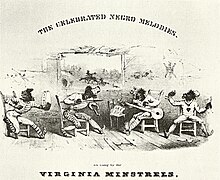


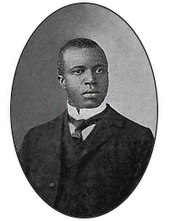


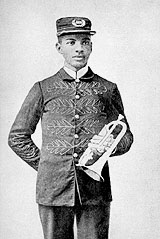
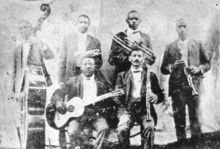

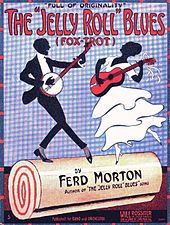


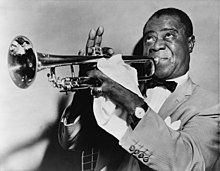
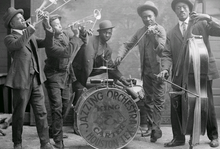






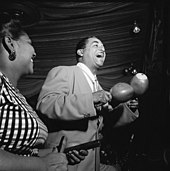

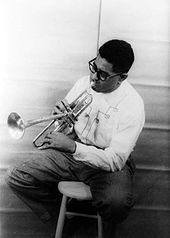
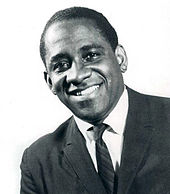


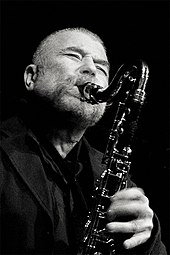
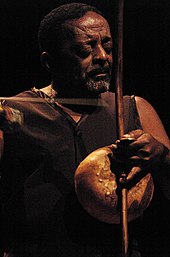
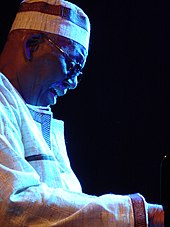





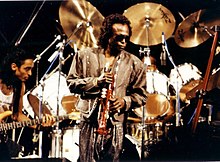
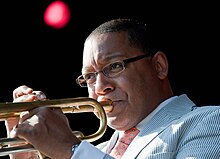

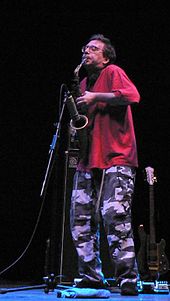
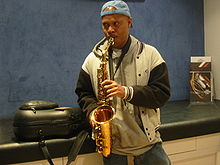
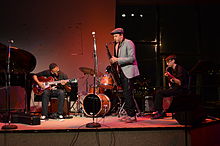



 留言列表
留言列表
 {{ article.title }}
{{ article.title }}

